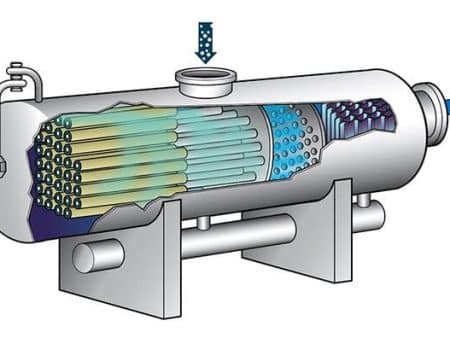Optimal dust collection ductwork allows air to be pulled from individual pieces of equipment at the velocity required, and it transports sufficient air volume to convey both relatively large particulate and very fine dust. The objective is to eliminate static pressure that can restrict air flow.
If you are a plant manager, maintenance manager, process engineer, or Environmental Health and Safety (EHS) manager who faces the challenges of collecting and/or recovering wood dust, metal shavings, chemical powders, pharmaceuticals, or other abrasive materials, then you understand the importance of not just dust collector technology, but also dust collection ductwork.
Selecting and investing in the optimal dust collection technology for your requirements is a major step toward optimizing shop safety, improving air quality, or recovering products. However, it is also critical that you make the correct decisions about the dust collection ductwork that you implement to convey the fine particulate matter (PM) that you are collecting or recovering from the various pieces of equipment that feed into the dust collector.
Objective Is To Eliminate Static Pressure
Optimal dust collection ductwork allows air to be pulled from individual pieces of equipment at the velocity required, and it transports sufficient air volume to convey both relatively large particulate and very fine dust. The objective is to eliminate static pressure that can restrict air flow, which requires minimizing smaller ducts, long distances, bends in the pipe, and flexible tubing.
Best Practices for Optimizing Dust Collection Ductwork
There are a number of generally accepted best practices about optimizing dust collection ductwork:
- All-metal construction is the best practice for dust collection ductwork because it reduces the probability of static electricity buildup, and the smooth rigid interiors reduce static pressure loss, even over long duct runs.
- Duct runs should be as short, straight and direct as possible to reduce static pressure. For example, a single duct of 30 feet or more that wraps around multiple walls will reduce air velocity and increase the risk of dust buildup. Instead, it is preferable to implement one shorter main duct with diagonal branches leading to the machine drops.
- Accurate pipe sizing is optimal. Although pipes of larger diameter permit greater air movement and introduce less static pressure, when the duct is too large, there won’t be sufficient air speed to convey particulate. Conversely, when the duct is too small, there will be insufficient air volume to remove fine particulate.
- Minimize flex pipe and ensure that any turns required are gradual to make it much easier for dust to travel through dust collection ductwork efficiently, without the dust having to slow down around curves.
- Eliminate bottlenecks near the collector and aim to have the main duct lead straight into the inlet. If this is not possible, for example, use two 45° bends instead of two 90° bends.
A Sub-Optimal Solution – Flanged Dust Collection Ductwork
Flanged ducting utilizes metal flanges to connect two pieces of duct. Flanges are fitted over each end of the pipe, and then the edge of the duct is turned up to keep the flange in place, before the flanges are bolted together.
Flanged dust collection ductwork is a sub-optimal solution for three primary reasons:
- Relatively long implementation times
- Once in place and bolted on, it is very difficult to move or change the dust collection ductwork
- Higher overall project cost
The Optimal Solution – Clamp-together Dust Collection Ductwork
A more viable dust collection ductwork option to address the challenges of static pressure is all-metal clamp-together duct, which fits together quickly without the need for custom sheet metal fabrication or bolting. The concept is similar to that of building sets and blocks, so installation time is generally measured in minutes, not hours, as occurs with traditional spiral duct. Clamp-together duct aligns perfectly, is highly versatile and modular, and is also clean, safe, efficient, durable, and reliable.
Clamp-together dust collection ductwork is fabricated to SMACNA (Sheet Metal and Air Conditioning Contractors’ National Association) ducting construction standards, and can be fabricated in heavier gauges for more abrasive applications. The product offers the benefits of adjustability, flexibility, re-usability, efficiency (as compared to spiral duct), and serviceability, in terms of easy access.
With clamp-together dust collection ductwork, your cut can be off several inches and you will still have the length required. Last but not least, clamp-together dust collection ductwork can be disassembled and reassembled quickly and easily. With clamp-together dust collection ductwork, there are a wide variety of quick-installation fittings available to meet your requirements – clamps, O-rings, flange adaptors, cut-offs, elbows, branches, and reducers – and none of these components need to be thrown away.
To learn more about dust collection ductwork, view our video on clamp-together duct. To find out how CECO Environmental can help you grow your business while improving your air quality, please view this brief video.
When it comes to dust collection ductwork, or other industrial ductwork, contact CECO KB Duct. We have a solution for you.



